- Home
- Kelley Armstrong
Alone in the Wild Page 5
Alone in the Wild Read online
Page 5
Also, whatever my issues with Jen, I wouldn’t leave the baby with her if I didn’t have to admit she could be trusted, at least in something this important.
Once the baby is out of the exam area, we bring in her mother’s body and put it on the same table. I undress her and fold her clothing into paper bags that I write on with a marker. Dalton takes notes as I dictate my initial observations while April waits.
I take pictures, too. We have a digital camera and a laptop for me to download the photographs, blow them up, analyze them … Crime solving in Rockton might make me feel like I’m working in Sherlock Holmes’s time, but I do have access to some modern tech. We generate a base level of solar power for food storage and the restaurant kitchens, and I can tap into that, but I don’t use it more than necessary, especially in winter, when the sun is at a premium.
When I undressed the woman in that clearing, I’d made observations that I need to follow up on before April begins her autopsy. So I tell her what I noticed. She listens and frowns and then nods and checks.
“Your observations are correct,” she says when she finishes. “This woman is not the infant’s mother.”
“Fuck,” Dalton exhales.
“Seconded,” I murmur.
When I’d first removed the dead woman’s shirt, what caught my attention was her breasts. I might not know much about babies, but I’ve worked alongside breastfeeding mothers, and I understand the basic physiological changes that go along with breastfeeding. This woman … well, she looks like I’d expect of a middle-aged woman with a D-cup bosom. In short, her breasts are not buoyed by mother’s milk. That could mean she was unable to breastfeed, which is why I hadn’t mentioned my suspicion to Dalton. It threw a huge monkey wrench into this scenario, and I wanted to be sure. Now I am.
“This woman has never given birth,” April says.
“She could have a child without breastfeeding,” I explain to Dalton. “But April is talking about her pubic bones. During pregnancy, they separate. The ligaments tear, which you’d see in a recent birth. There’s none of that. Long-term, that heals, but it leaves pitting, which I learned from that forensic anthropology text you got me. That’s why April believes this woman has never had a child.”
“So she isn’t the baby’s mother,” Dalton says. “I don’t even know where to go with that.”
“I do,” I say. “Because I’ve been considering it since I got a good look at her. Unfortunately, that path goes in a million directions.”
“I believe a million is overstating the matter,” April says.
“It’s rhetorical hyperbole,” I say. Before she can argue, I continue. “The woman could be related to the baby. She could be a caretaker. She could have stolen it. Of course, if she’d been caught stealing it, whoever shot her should have taken the baby back. If she’s a relative or caretaker, I’d expect the parents to be combing the woods looking for her, and we didn’t hear anything.”
“Does it matter how this woman obtained the child?” April asks, and her tone makes it sound like an accusation but I’m learning not to jump on the defensive.
“It does,” I say. “Because if she knows the baby, then her body may provide clues to the baby’s home. If she doesn’t know her…”
I don’t finish. This woman is my only link to the baby’s origins. If she has no relationship to the child—if they aren’t from the same family or settlement—then I wouldn’t even know where to begin. It’s like dropping a naked baby on a church doorstep. I need something to work with, and this woman is all I have right now.
I will find my clues here. Pretend I really am living in the nineteenth century and channel my inner Sherlock Holmes to tease out the threads leading to a connection that will, ultimately, take this woman and—I hope—the baby home. For that, my best clues might be contained in the literal threads that surround her: the woman’s clothing. I force myself to set that aside for now and focus on what her body tells us instead.
This woman was not born in the wilderness. There are fillings in her teeth and the dents of old ear piercings. She also has a mark that may be a belly button piercing.
I take photos of the ritual scarring and tattooing. Both seem unfinished, and the scars are old. She hasn’t been a hostile in a while. My mind automatically seizes on this and wants to start extrapolating potential information on the nature of hostiles. But that’s not what this is about. File it for later. Focus on the clues for this woman as an individual, not as a general exemplar.
She’s lost the tips of two toes to frostbite. The bottoms of her feet are callused and thick-soled. I also note that one of her wrists is slightly crooked, and April confirms that the bone has been broken and healed poorly. That could have taken place with the hostiles or afterward—medicine outside Rockton is primitive, and the fact that it healed at all shows she had basic medical care.
On to cause of death. April confirms it wasn’t the blow to the back of her head. That’s ugly, and it left a mark on the bone, but it wouldn’t have been incapacitating. The wound on her leg is indeed a bullet hole. A pellet hole, to be exact, from a shotgun. We find a buckshot pellet. There’s only one, which suggests the gun was fired from a distance. That’s not how you use buckshot—if you’re hunting large game with a shotgun at a distance, you’d use a slug and, arguably, you should be using a rifle, but out here, people take the weapons and ammo they can get. At that range, a buckshot pellet isn’t usually fatal, but if you hit the right spot—like the femoral artery—it can be.
Struck by a blow to the back of the head. Puts on her hat afterward. No time to treat the injury? Trying to get somewhere first? Then she’s shot. I don’t see any signs that she’d attempted to treat that or even stop the bleeding.
Mental confusion from the head blow? Shock? Hypothermia? She’d been escaping someone in the forest, possibly at night, snow falling.
I remember her position, fetal on her side, protecting the baby.
I’m just going to lie down for a minute. Rest.
That’s a classic sign of hypothermia. Someone accustomed to life out here would know better, but add the blow to the head with the baby clutched to her breast, and she had good reason to succumb.
Running. Fleeing. Lost. Exhausted. Drop and curl up … and bleed out in the snow, too befuddled from a head injury to tend to your injured leg.
The woman’s stomach has food in it. Not much, suggesting she hadn’t recently eaten. There’s nothing for me to analyze there. I don’t know what I’d be looking for anyway—ah-ha, she ate hare, and from the semi-digested bits, I can tell it was a specific subtype, found only on Bear Skull Mountain. Yeah, no. She isn’t starving, but neither had she just eaten before her death. That’s all I need.
Speaking of eating, that makes me realize the dead woman didn’t have any supplies on her. No backpack. Nothing to feed the baby either. Does that suggest she fled unexpectedly? She was properly dressed, so it wasn’t as if she grabbed the baby and ran out into the snow.
I check her clothing pockets. Only her parka has them, and I find a knife in an interior one.
Clothing next. The most interesting piece had been around her ankle—her sole jewelry. A braided leather anklet inscribed with “Hope. Dream. Love.” The letters have been burned in with painstaking care. The leather edges show faint wear. It’s not new, but it isn’t old either.
Most of the woman’s clothing is basic in its construction. It shows a knowledge of tanning and sewing at a journeyman level. It’s sturdy, and it does the job. Her jacket and boots are different. They’re serious craftsmanship. The parka is done in the Inuit style—caribou with the fur inside, the hollow hairs adding extra insulation. The hood is framed in ermine. Her boots are also caribou, and her socks are mink. Warm and luxurious. All three have decorative flairs not found on her clothing. The jacket buttons are polished stones. The laces on the boots and jacket end in bone carvings of fox heads—gorgeous work that I didn’t even notice until now.
Her outerwear mus
t be trade goods. With that, I have my first solid clue. Someone made her parka and boots. Someone with enough talent that others will recognize the workmanship.
The first person I’d normally ask is Jacob, Dalton’s brother, who still lives in the forest. He’s away, though, on a hunting expedition with Nicole, a Rockton resident. I’m hoping it’s more than a hunting trip, but either way, he’s not nearby. My second point of contact would be former Rockton sheriff Tyrone Cypher. Yet his winter camp is a few hours away, and he might not be there.
We’ll start with option three: the First Settlement. I’d much rather deal with Jacob or Cypher, but I will admit that someone in the settlement is more likely to recognize the workmanship. It might even come from there—after Rockton, they’re the largest community in the area.
Once April finishes the autopsy, I go into the waiting room to check on the baby. Jen starts passing her to me.
I lift my hands. “I can hold her if you have to do something, but I need to go talk to Phil.” I take the baby and pull her into a cuddle. Then I stop. “What’s that…” I sniff again and look at Jen.
“Why do you think I was handing her to you?” she says. “I’m about to teach you a valuable baby-care lesson. You can thank me later.”
Dalton walks in. “We need to—”
I hand him the baby. “She wants you.”
His brows arch, but he takes her. Then his nose wrinkles.
“Jen’s going to teach you how to change a diaper,” I say. “I’d love to help, but I need to talk to Phil.”
I hurry out the door before he can argue.
EIGHT
Phil isn’t at his house. I’ll admit to some relief at discovering that, even if it means I have to go find him. When he arrived—or was exiled here as our new town council rep—he’d stayed in his house as much as April stayed in hers.
Well, no, my sister spends most of her days in the clinic, where she interacts with residents, whether she wants to or not. Phil just stayed in his house. Waiting for a call from the council, I suspect, to tell him all was forgiven and he could come home. To his credit, when he realized that wasn’t happening, he stepped out and into his role.
It’s in Phil’s best interests to take a more active part in town life. Which does not mean he’s hanging holiday decorations or mulling cider for the weekly wassailing party. Phil is a corporate man. The kind of guy who was born with a cell phone in one hand, a clipboard in the other, and both eyes on the corporate ladder. He’s young—thirty—and ambitious as hell. Which makes Rockton his actual hell.
If there’s a ladder here, Dalton is ensconced at the top. With a weak sheriff, Phil might have been able to muscle through and crown himself King of Rockton. Phil knows better than to even try it with Dalton, which proves he has some brains to go with that ego and ambition.
Phil is slowly carving out his place, and it’s the one he’s most comfortable with. A managerial position in a town that really could use a manager. So, if Phil’s not home, then I’m most likely to find him managing. In the kitchens, analyzing production. In the shops, checking inventory levels. Or simply walking about town, making note of who is chatting on a porch when they’re supposed to be working.
I’m directed to the woodshed, where he was seen an hour ago. He’s made some adjustments to the winter-supply system, decreasing free allotments of heating wood while also decreasing the cost for extra. There’s been grumbling, but his theory is sound. If people get x logs per week free, then they burn x logs, whether they need them or not. This way, they’re encouraged to dress warmer or use extra blankets or even socialize more in the common areas, but if they really do want more home heat, the additional fee is reasonable.
These are the aspects of life in Rockton that Dalton just doesn’t have the time—or the inclination—to manage. It’s a matter of fine-tuning the overall system to balance conservation, labor, and resident happiness. Phil might see this as a hobby to occupy him while he waits for his release papers, but he really is helping.
“He came, he saw, he left again,” Kenny says when I walk into the small carpentry shop next to the lumber shed. Kenny grabs his crutches and leads me outside.
Kenny is our local carpenter. He used to also be our lead militia, and while we haven’t taken that title away, he’s only recently resumed patrols. Six months ago, he took a bullet for Storm. That bullet didn’t paralyze him, but he still needs crutches and leg braces. Will he always need them? That’s impossible even for my neurosurgeon sister to say. In six months, Kenny has graduated from bed to crutches. He’s working on regaining full mobility while understanding that may never come.
Outside the carpentry shed, he calls, “Sebastian!” The thump of splitting lumber stops, and a moment later, our youngest—and possibly most dangerous—resident appears. Sebastian is a clinically diagnosed sociopath who murdered his parents at the age of eleven and spent the next seven years locked up. Which probably means we shouldn’t be giving him an ax and sending him out to the woodpile alone. But Sebastian is … an interesting case.
“Hey, Casey,” he says as he jogs over, ax in hand. “You’re back early. Everything okay?”
“Pretty much. Mathias give you the day off?”
“Nah, I took it. He’s in a mood. I decided to chop wood and stay out of his way before we kill each other.” His eyes glint at that, almost self-deprecating recognition that—as we both know—this is an entirely valid concern, given the parties involved. “He’ll be glad to have Raoul back, though. He spent all morning snapping about how glad he is not to have that ‘mongrel’ underfoot, which means he misses him.”
“Well, Raoul is home, and I’m looking for Phil. Was he here?”
“Yep, he came to check the woodpiles. He left about twenty minutes ago. Said he was heading to the Roc to go over the alcohol inventory with Isabel. You want me to run grab him?”
“I’ve got it. Thanks.”
As Sebastian jogs back to his chopping, Kenny says, “He’s a good kid. Really good.”
I make a noncommittal noise. Of course, Kenny has no idea what Sebastian is or why he’s here. That’s on a need-to-know basis, and the only ones who need to know are myself, Dalton, and Mathias. And Sebastian is, in his way, a good kid. At least he’s trying to be, and in Rockton, that’s what counts.
Sebastian knows what he is, and he’s spent years in therapy for it. He’s continuing his rehabilitation here with Mathias, the town butcher who used to be a psychiatrist specializing in psychopathy and sociopathy … and who may be an expert on the subject in more than just a professional sense.
It’s Rockton. Everyone has a story. Everyone has shadows in their past. It’s what they do here that matters. Sebastian is a model citizen. Others are not, and they don’t have his excuse of mental illness.
Up here, what you were before—and what you are at heart—is not nearly as important as what you choose to be. At least for now, Sebastian chooses this path, and we’ll let him have it, while we stand watch in case that changes.
I head to the Roc. It’s one of two bars, which may seem unwise in such a small town. Northern communities often struggle with substance-abuse issues. Long cold winters. Limited entertainment options. The isolation and subsequent cabin fever. Rockton deals with that by regulating alcohol even more tightly than other commodities. Part of regulating it is having two bars. Two places to enjoy a social drink while being monitored by staff who will cut you off fast, because if you start a drunken brawl, both you and your server will spend a week on chopping duty.
There are also two bars because the Roc serves dual purpose as a brothel. Yes, brothel. Right now we have a hundred and forty men and thirty-two women. I’m still not convinced that “brothel” is the way to handle that disparity, but I’m a lot more willing to concede the possibility than I was when I first moved in.
It isn’t a perfect solution. It leads to an expectation that, if some women take credits for sex, maybe they all will, if the price is high enough. I dea
lt with my share of offers when I first arrived, and in the early days of my relationship with Dalton, plenty of residents suspected I hooked up with him just to put a very big barrier between myself and the male population.
However, I will admit that Isabel regulates the sex trade as tightly as she does the booze. Part of that regulation is making damned sure every woman who does it wants to do it, is safe doing it, and can say no to any client. And woe to the man who asks twice once he’s gotten that no.
At this time of day, the Roc is closed. It’ll open at five, and Isabel’s “girls” won’t be on duty until nine. That’s a recent development, as Isabel tries to make the Roc more accessible to female patrons. I’d pointed out the unfairness of having half of the bars virtually off-limits to female patrons. Isabel saw my point, and we negotiated the nonbrothel early-bird hours.
I open the doors and walk into the Roc, which looks like a Wild West saloon. I’ll admit that part of the “female-friendly” schedule changes are totally selfish on my part. The Red Lion can be stuffy. The Roc is a place where you can grab a drink and park yourself at any table and be welcomed into the conversation.
Right now, the inside is dim and cool and smells of pine shavings. The shavings cover the floor, both for atmosphere and easy cleaning at night’s end, shavings swept up in the morning and fed back into that evening’s fire as kindling. We are conservation kings in Rockton. Also, the shavings smell nice and add to that old-time saloon atmosphere.
I walk behind the bar to the most secure door in Rockton: the liquor safe. It’s closed, and I raise my hand to knock just as a noise sounds from overhead. The very distinctive sound of bedsprings squeaking … along with other distinctive sounds that often accompany that one.
I could leave and come back in an hour. That would be the right thing to do. My business with Phil isn’t urgent. Not as urgent as his current business. However … Well, really, this is just too much fun to resist.
I take a jug of iced tea from the underfloor cooler, pour a glass, and wait. The sounds subside after just enough time for me to finish my drink. Then I head upstairs, calling, “Isabel?”

 The Calling
The Calling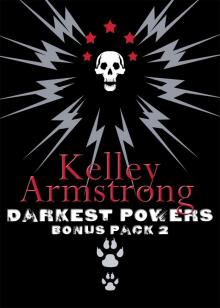 Darkest Powers Bonus Pack
Darkest Powers Bonus Pack Betrayals
Betrayals Sea of Shadows
Sea of Shadows Rough Justice
Rough Justice This Fallen Prey
This Fallen Prey City of the Lost: Part Five
City of the Lost: Part Five Perfect Victim
Perfect Victim Dime Store Magic
Dime Store Magic Personal Demon
Personal Demon Haunted
Haunted Living With the Dead
Living With the Dead Visions
Visions The Summoning
The Summoning Broken
Broken City of the Lost: Part One
City of the Lost: Part One No Humans Involved
No Humans Involved The Awakening
The Awakening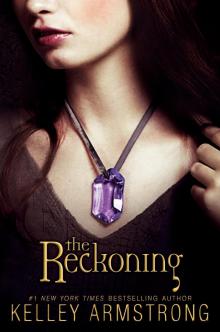 The Reckoning
The Reckoning The Gathering
The Gathering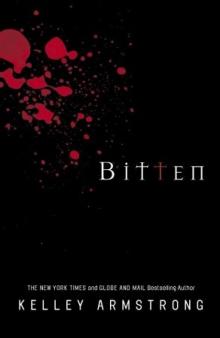 Bitten
Bitten Thirteen
Thirteen Gifted
Gifted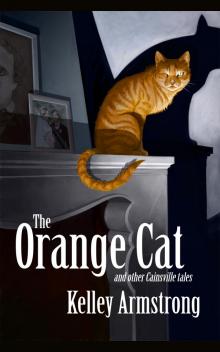 The Orange Cat and Other Cainsville Tales
The Orange Cat and Other Cainsville Tales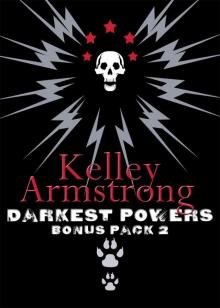 Darkest Powers Bonus Pack 2
Darkest Powers Bonus Pack 2 Rituals
Rituals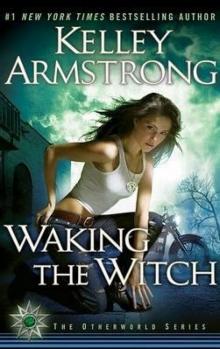 Waking the Witch
Waking the Witch Made to Be Broken
Made to Be Broken Lost Souls
Lost Souls Empire of Night
Empire of Night Wild Justice
Wild Justice Double Play
Double Play Alone in the Wild
Alone in the Wild City of the Lost: Part Two
City of the Lost: Part Two A Stranger in Town
A Stranger in Town Watcher in the Woods: A Rockton Novel
Watcher in the Woods: A Rockton Novel Atoning
Atoning Spellbound
Spellbound Wolf's Bane
Wolf's Bane A Darkness Absolute
A Darkness Absolute Ballgowns & Butterflies: A Stitch in Time Holiday Novella
Ballgowns & Butterflies: A Stitch in Time Holiday Novella Wherever She Goes
Wherever She Goes A Royal Guide to Monster Slaying
A Royal Guide to Monster Slaying Life Is Short and Then You Die
Life Is Short and Then You Die City of the Lost: Part Three
City of the Lost: Part Three Frostbitten
Frostbitten A Stitch in Time
A Stitch in Time Industrial Magic
Industrial Magic Wherever She Goes (ARC)
Wherever She Goes (ARC) Snowstorms & Sleigh Bells: A Stitch in Time holiday novella
Snowstorms & Sleigh Bells: A Stitch in Time holiday novella Exit Strategy
Exit Strategy Forest of Ruin
Forest of Ruin Cursed Luck, Book 1
Cursed Luck, Book 1 The Gryphon's Lair
The Gryphon's Lair City of the Lost
City of the Lost City of the Lost: Part Four
City of the Lost: Part Four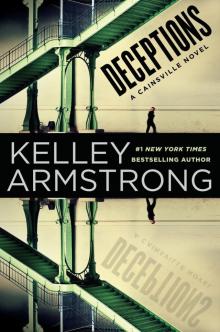 Deceptions
Deceptions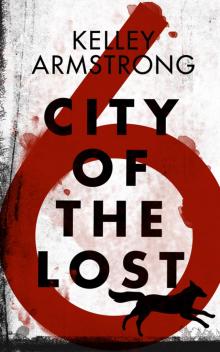 City of the Lost: Part Six
City of the Lost: Part Six Urban Enemies
Urban Enemies Stolen
Stolen Every Step She Takes
Every Step She Takes Portents
Portents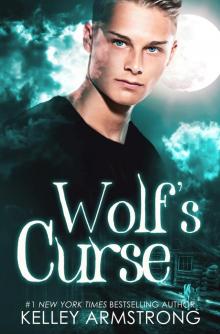 Wolf's Curse
Wolf's Curse The Unquiet past
The Unquiet past Omens ct-1
Omens ct-1 Cruel Fate
Cruel Fate The Calling dr-2
The Calling dr-2 The Awakening dp-2
The Awakening dp-2 Life Is Short and Then You Die_First Encounters With Murder From Mystery Writers of America
Life Is Short and Then You Die_First Encounters With Murder From Mystery Writers of America Goddess of Summer Love: a Cursed Luck novella
Goddess of Summer Love: a Cursed Luck novella Strangers Among Us
Strangers Among Us The Gathering dr-1
The Gathering dr-1 The Rising dr-3
The Rising dr-3 The Summoning dp-1
The Summoning dp-1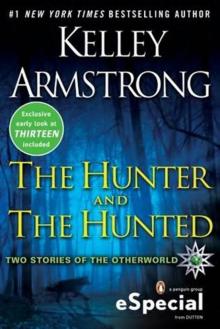 The Hunter And The Hunted
The Hunter And The Hunted Waking the Witch woto-11
Waking the Witch woto-11